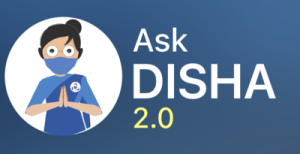A new wellness trend known as adult tummy time is gaining popularity online. This simple, floor-based technique aims to alleviate tech neck, which refers to the stiffness, pain, and poor posture resulting from prolonged screen usage.
Inspired by exercises designed for infant development, adult tummy time involves lying face-down, supported by your elbows. This position stretches the front of the body and strengthens the neck, shoulders, and spine. Physical therapists suggest that this practice can counteract the detrimental effects of slouching, reduce tension, and improve spinal alignment. The trend has garnered millions of views on social media, establishing itself as an accessible and equipment-free solution for contemporary aches and pains, particularly among office workers and those working remotely.

Tech neck describes the neck pain and stiffness that arise from extended periods spent looking down at electronic devices. This posture places undue stress on the cervical spine, increasing pressure by up to 10 pounds for every inch the head is tilted forward. Over time, this can result in chronic discomfort, headaches, nerve compression, and even spinal degeneration. The increase in remote work and screen time has led to a surge in tech neck symptoms, especially among students and office workers.
Just as tummy time assists infants in developing neck and core strength, adult tummy time promotes spinal extension and muscle activation in the neck, shoulders, and lower back. By lying on the stomach and lifting the upper body, this position reverses the effects of constant forward flexion. Experts recommend dedicating as little as 10 minutes a day to improve posture, relieve muscle tension, and prevent strain-related injuries. It is particularly beneficial for individuals with mild postural issues or those who lead sedentary lives.
Follow these steps to perform adult tummy time effectively:
Begin with 5–10 minutes per session, and immediately stop if you experience sharp pain, dizziness, or numbness.

While generally considered safe, adult tummy time is not suitable for everyone. Individuals with cervical or lumbar spinal conditions (such as stenosis or arthritis), those recovering from recent surgery, or pregnant women should consult their healthcare provider before trying it. People experiencing severe neck or back pain may require modified stretches prescribed by a physical therapist.
If lying on the floor is not an option, several other exercises can help alleviate tech neck. These include:
The primary goal is to strengthen postural muscles and stretch tight areas like the chest and back of the neck.
Experts emphasize that regular movement is the most effective way to prevent tech-related aches. Prolonged periods in a single position, whether slumped or upright, can strain muscles and joints. Taking frequent breaks, varying your posture, and incorporating simple mobility exercises can significantly contribute to long-term spinal health.
Newer articles
Older articles
 Moto G54 Gets Significant Price Cut in India, Making Budget Smartphone Even More Appealing
Moto G54 Gets Significant Price Cut in India, Making Budget Smartphone Even More Appealing
 Africa's Rift Valley: Mantle Upwelling Drives Continent's Split and Birth of New Ocean
Africa's Rift Valley: Mantle Upwelling Drives Continent's Split and Birth of New Ocean
 X Cracks Down: Over Half a Million Indian Accounts Suspended for Policy Breaches
X Cracks Down: Over Half a Million Indian Accounts Suspended for Policy Breaches
 Vijay Sethupathi Apologizes Amid Controversy Over Son Surya's Debut Film 'Phoenix'
Vijay Sethupathi Apologizes Amid Controversy Over Son Surya's Debut Film 'Phoenix'
 Jadeja's Accuracy Questioned: Ex-India Pacer Slams Spin Strategy in England Test Loss
Jadeja's Accuracy Questioned: Ex-India Pacer Slams Spin Strategy in England Test Loss
 IRCTC's AI Chatbot Revolutionizes Train Ticket Booking, Refunds, and Information Access
IRCTC's AI Chatbot Revolutionizes Train Ticket Booking, Refunds, and Information Access
 Ashada Gupt Navratri 2025: Unveiling Dates, Sacred Rituals & Hidden Significance of the Monsoon Festival
Ashada Gupt Navratri 2025: Unveiling Dates, Sacred Rituals & Hidden Significance of the Monsoon Festival
 Google Maps Enhances Directional Accuracy with Fused Orientation Provider Update
Google Maps Enhances Directional Accuracy with Fused Orientation Provider Update
 xAI to Open Source Grok, Democratizing Access to Musk's AI Chatbot
xAI to Open Source Grok, Democratizing Access to Musk's AI Chatbot
 Android Users Urged to Patch Now: Critical Security Flaws Expose Devices to Attacks
Android Users Urged to Patch Now: Critical Security Flaws Expose Devices to Attacks